
Pope Innocent XII, born Antonio Pignatelli, was head of the Catholic Church and ruler of the Papal States from 12 July 1691 to his death in September 1700.

The papal conclave held from 24 February to 31 March 1829 to elect a successor to the recently deceased Leo XII resulted in the accession of Cardinal Francesco Castiglioni, who took the name Pius VIII.

The papal conclave held from 2 to 28 September 1823 ended with the election of Annibale della Genga to succeed the death recently deceased Pius VII as pope. Della Genga took the name Leo XII.
Jus exclusivae was the right claimed by several Catholic monarchs of Europe to veto a candidate for the papacy. Although never formally recognized by the Catholic Church, the monarchs of France, Spain and Austria claimed this right at various times, making known to a papal conclave, through a crown-cardinal, that the monarch deemed a particular candidate for the papacy objectionable.

A cardinal-nephew was a cardinal elevated by a pope who was that cardinal's relative. The practice of creating cardinal-nephews originated in the Middle Ages, and reached its apex during the 16th and 17th centuries. The last cardinal-nephew was named in 1689 and the practice was abolished in 1692. The word nepotism originally referred specifically to this practice, when it appeared in the English language about 1669. From the middle of the Avignon Papacy (1309–1377) until Pope Innocent XII's anti-nepotism bull, Romanum decet pontificem (1692), a pope without a cardinal-nephew was the exception to the rule. Every Renaissance pope who created cardinals appointed a relative to the College of Cardinals, and the nephew was the most common choice, although one of Alexander VI's creations was his own son.

The 1667 papal conclave was convened on the death of Pope Alexander VII and ended with the election of Cardinal Giulio Rospigliosi as Pope Clement IX. The conclave was dominated by factions loyal to the cardinal nephews of Alexander VII and Urban VIII. It saw the continued existence of the Squadrone Volante, or Flying Squadron, that had emerged in the 1655 conclave. The conclave also saw Spain and France, the two largest Catholic powers at the time, both support Rospigliosi's election as pope. Ultimately, Rospigliosi's election was achieved when the French ambassador bribed Flavio Chigi, Alexander's nephew, to support Rospigliosi. Following the conclave all the parties believed they had elected the pope that they had wanted.
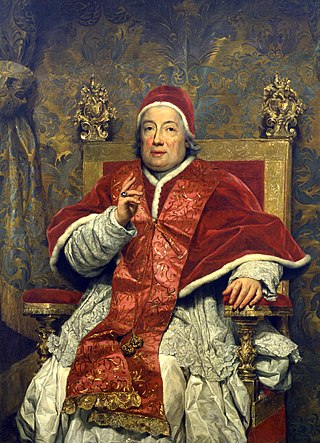
The 1758 papal conclave, convoked after the death of Pope Benedict XIV, elected Cardinal Carlo Rezzonico of Venice, who took the name Clement XIII.

The 1721 papal conclave, convoked after the death of Pope Clement XI, elected Cardinal Michelangelo de' Conti, who took the name of Innocent XIII.
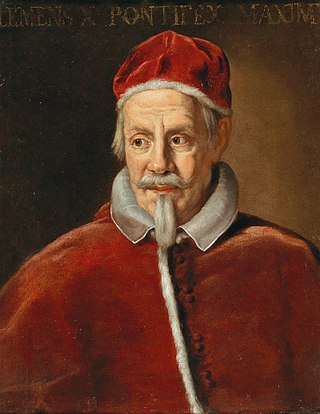
The 1669–70 papal conclave was convened on the death of Pope Clement IX and ended with the election of Cardinal Emilio Altieri as Pope Clement X. The election saw deference within the College of Cardinals to Louis XIV of France, and a freeing of the cardinals loyal to Spain to vote according to their conscience. Eventually the elderly Altieri was elected with support of the major factions within the College.
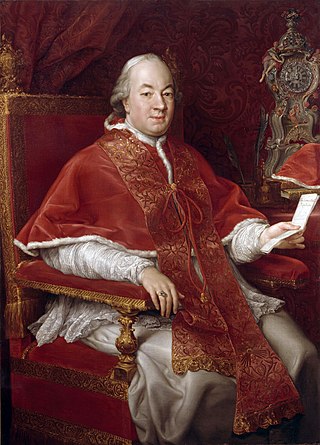
The 1774–75 papal conclave, was convoked after the death of Pope Clement XIV and ended with the election of Cardinal Giovanni Angelo Braschi, who took the name of Pius VI.

The 1769 papal conclave, was convoked after the death of Pope Clement XIII. It elected as his successor Cardinal Lorenzo Ganganelli, who took the name Clement XIV.

The 1655 papal conclave was convened following the death of Pope Innocent X and ended with the election of Cardinal Fabio Chigi as Alexander VII. The conclave quickly reached a deadlock, with Giulio Cesare Sacchetti receiving 33 votes throughout the conclave, but never securing enough for his own election. After several months of deliberation and negotiation, Chigi was elected Pope when Cardinal Mazarin, the leader of the French government, consented to Chigi's election at the request of Sacchetti.
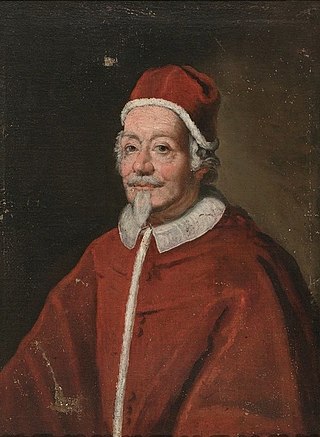
The 1689 papal conclave was convened after the death of Pope Innocent XI. It led to the election of Cardinal Pietro Vito Ottoboni as Pope Alexander VIII. The conclave saw previous factions join together because they lacked numerical strength, and saw the rise of the zelanti as a political force in the election of the next pope. Ottoboni was eventually unanimously elected with the consent of the secular monarchs, becoming the first Venetian in over 200 years to be elected pope.

The 1691 papal conclave was convened on the death of Pope Alexander VIII and ended with the election of Cardinal Antonio Pignatelli as Pope Innocent XII. It lasted for five months, from 12 February to 12 July 1691. The conclave became deadlocked after Catholic monarchs opposed the election of Gregorio Barbarigo, who some members of the College of Cardinals also viewed as too strict. The conclave only ended in July when cardinals started to become ill from the heat, and after French cardinals agreed to vote for Pignatelli despite him coming from Spanish-controlled Naples.

The 1724 papal conclave was called upon the death of Pope Innocent XIII. It began on 20 March 1724 and ended on 28 May that year with the election of Cardinal Vincenzo Maria Orsini, a Dominican friar, as Pope Benedict XIII. The conclave was made of largely the same electors that had elected Innocent in 1721 and the same factions dominated it. Multiple attempts were made to elect candidates that would be acceptable to the various Catholic monarchies at the time, but none were successful until May. Benedict resisted his own election for two days before being convinced to accept it.

The 1730 papal conclave elected Pope Clement XII as the successor to Pope Benedict XIII.
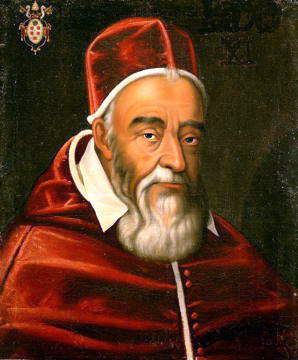
The March–April 1605 papal conclave was convened on the death of Pope Clement VIII and ended with the election of Cardinal Alessandro Ottaviano de' Medici as Pope Leo XI. It was the first of two papal conclaves in 1605; Leo died on 27 April 1605, twenty-six days after he was elected. The conclave was dominated by conflict over whether Cesare Baronius should be elected pope, and Philip III of Spain excluded both Baronius and the eventually successful candidate, Medici.

In the papal conclave held from 8 to 16 May 1605 Cardinal Camillo Borghes was elected to succeed Leo XI as pope. Borghes took the name Paul V. This was the second conclave of 1605, with the one that had elected Leo XI having concluded just 37 days earlier. It is significant for having the only recorded case of an injury at a papal conclave, which was the result of a physical fight amongst the cardinals over who should be elected pope.

The papal conclave of March–April 1605 was convened on the death of Pope Clement VIII and ended with the election of Alessandro Ottaviano de' Medici as Pope Leo XI on 1 April 1605. It was the first of two papal conclaves in 1605, with Leo dying on 27 April 1605, twenty-six days after he was elected, and the conclave to elect his successor being held in May. The conclave saw conflict regarding whether Cesare Baronius should be elected pope, and Philip III of Spain, the Spanish king, excluded both Baronius and the eventually successful candidate, Medici. Philip's exclusion of Medici was announced by Cardinal Ávila after his election to the papacy, and the other cardinals did not view it as valid since Medici had already been elected pope.

The papal conclave of May 1605 was convened on the death of Pope Leo XI and ended with the election of Camillo Borghese as Pope Paul V on 16 May 1605. It was the second of two papal conclaves in 1605, with Leo dying on 27 April 1605, twenty-six days after he was elected in the March–April 1605 papal conclave.


















